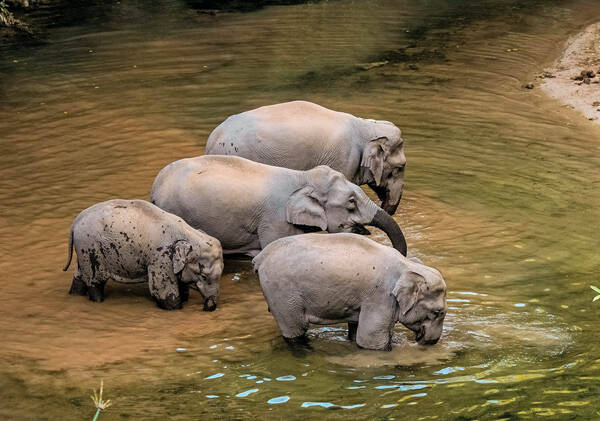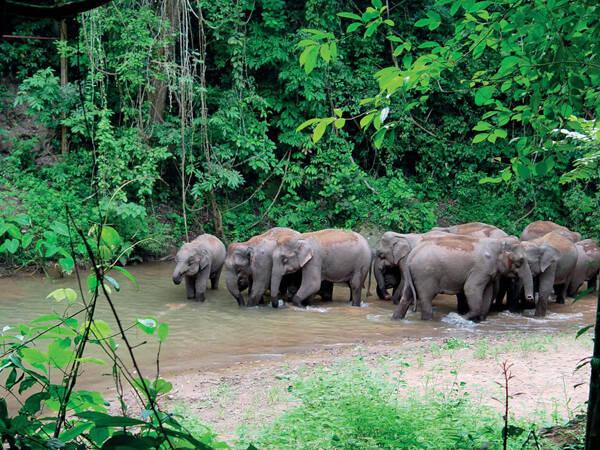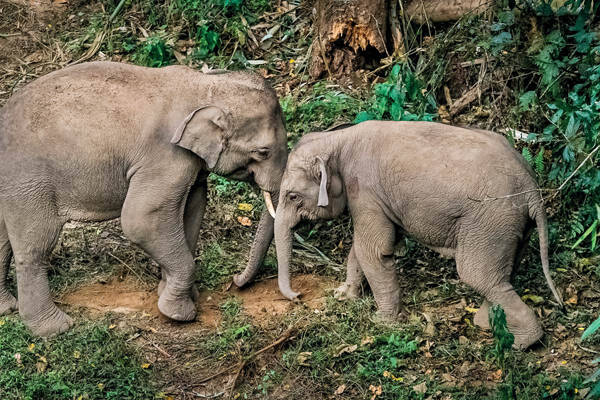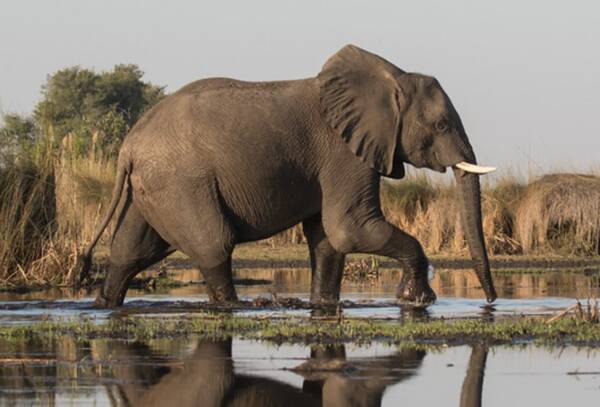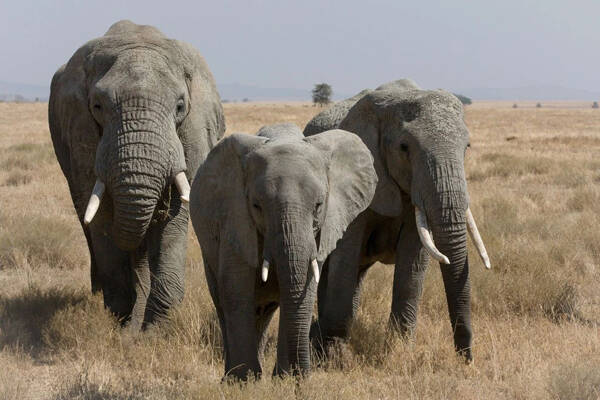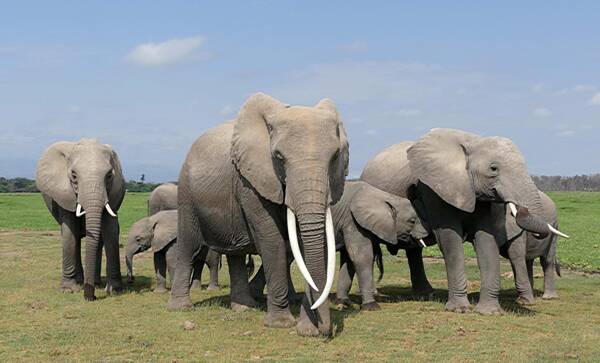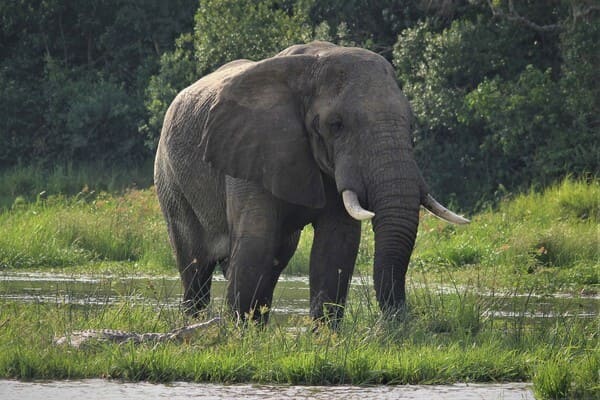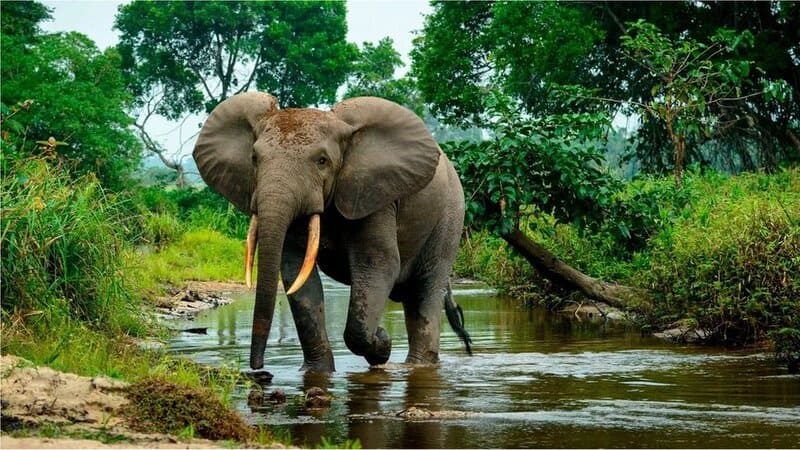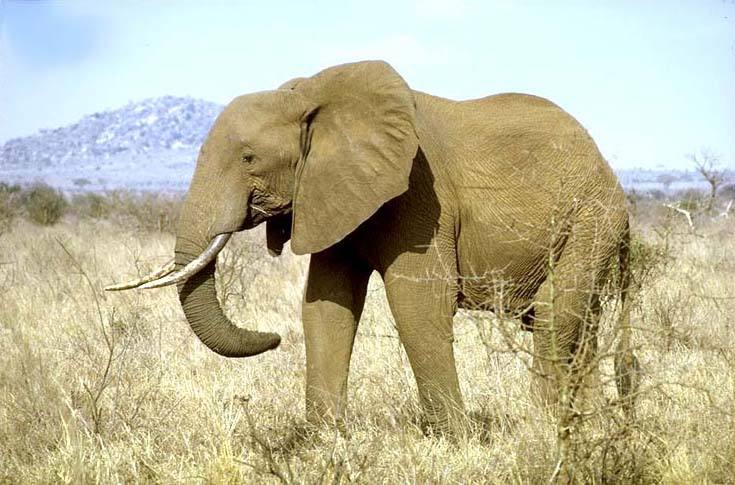African savanna elephant
IUCN
ENBasic Information
Scientific classification
- name:African savanna elephant
- Scientific Name:Loxodonta africana
- Outline:Proboscidea
- Family:Proboscidea Elephantidae Loxodonta
Vital signs
- length:5.4-7.5m
- Weight:3-6 tons
- lifetime:60-70 years old
Feature
The largest living land animal on Earth
Distribution and Habitat
Widely distributed across the African continent. It is the national animal of Mozambique and Côte d'Ivoire.
African savanna elephants live in many habitats in Africa, such as savannas, rainforests, woodlands, scrublands, and occasionally deserts and beaches. However, due to the threat of poaching, protected areas are their main habitat. In these protected areas, these elephants will inhabit areas with water sources and rich vegetation to forage for food. In these habitats, the altitude ranges from sea level to 4,000 meters.
Appearance
They are large in size, with grey fur, their hindquarters are as high as their front shoulders, and their tusks are extremely long and curved upwards. The largest recorded weight of their tusks is 102.7 kg. Their ears are large, pointed at the bottom, and can be up to 1.5 meters long. They have abundant blood vessels to dissipate heat and keep the body cool. Their tails are not long, and there is a brush on the top. Their long trunks can be used not only for smelling, breathing, blowing, and drinking water, but also for grabbing things, especially delicious meals. The trunks have about 100,000 muscles. There are two finger-like protrusions at the end of the African savanna elephant's trunk, which are very sensitive and dexterous and can be used to grab small things.
Details
I. Physical Characteristics
The African savanna elephant is the largest extant terrestrial mammal. Compared to forest Elephants-Are-Endangered.html">elephants (which have rounder ears and straighter, pinker tusks), savanna Elephants-Are-Endangered.html">elephants have larger, triangular-shaped ears and a slightly arched back and shoulders. Males have significantly longer and thicker tusks and higher shoulder hump, and two protruding "fingers" on the tip of their trunks for grasping grass, branches, and bark.
II. Distribution and Habitat
They are primarily found in the savannah-shrubland-wetland mosaic of sub-Saharan Africa, from the East African savannah to the arid grasslands of southern Africa. Between the rainy and dry seasons, herds migrate between water sources and foraging grounds. Some areas experience seasonal cross-border movements (e.g., the Kavango-Zambezi Transfrontier Conservation Network, which spans Botswana, Namibia, Zambia, and Zimbabwe).
III. Social Behavior and Ecological Roles
Savanna Elephants-Are-Endangered.html">elephants form matrilineal family groups, led by older females (matriarchs). Adult male elephants often live alone or in loose groups. Elephants shape the structure of savannas through trampling and foraging, clearing grasslands, dispersing seeds, and digging waterholes, maintaining their role as keystone ecosystem species (ecosystem engineers).
IV. Reproduction and Life Cycle
Female elephants reach sexual maturity at 10–12 years of age; gestation lasts approximately 22 months, typically with a single birth. Lactation can last for over two years, and calves are raised in herds through collective care. Their long lifespan and low reproductive rate mean that the population is highly sensitive to the loss of adults (especially older males with large tusks), and recovery is slow.
V. Population Size and Trends
Since the mid-to-late 20th century, African elephants have experienced a significant decline in overall numbers due to poaching and habitat loss. Since the 2010s, some countries have seen success in anti-poaching and community-based conservation efforts, leading to localized population recovery, but with significant regional disparity: some hotspot assessments still show declines or high levels of fragmentation. Before publishing, it is recommended to check the estimates and trend charts in the IUCN Red List: Loxodonta africana and the latest IUCN/Elephant Specialist Group (AfESG) "State of the African Elephant" report.
VI. Major Threats
Poaching and Illegal Ivory Trade: Poaching particularly targets large male elephants, leading to an imbalance in sex-age structure.
Habitat Loss and Fragmentation: Agricultural expansion and infrastructure development disrupt migration routes.
Human-elephant Conflict: Crop damage and security risks trigger retaliatory killings.
Climate Change and Drought: Extreme weather increases water stress, impacting reproduction and calf survival.
Disease and Inadequate Transboundary Management: Inadequate transboundary law enforcement and data sharing impact overall management effectiveness.
VII. Conservation Status and Measures
Law and Law Enforcement: Most countries list the elephant as a first-class protected area; international collaboration is underway to combat illegal trade.
Protected Area Network: National parks/nature reserves and transboundary protected areas (such as the KAZA TFCA) maintain migratory corridors.
Community Co-management: Ecotourism sharing, compensation mechanisms, and conflict reduction measures such as "smart fences/beehive fences" reduce agricultural losses.
Monitoring and Research: Aerial surveys, satellite collar tracking, fecal DNA assessment, and camera traps.
Public Education and Demand-Side Governance: Reducing ivory consumption, promoting legal alternatives, and cultural advocacy.
8. Interesting Facts
Elephants' memory and social learning can transmit information about migration routes and water sources across generations.
Elephant herds communicate through infrasound, which can travel several kilometers.
Auricular "Radiator": A rich network of blood vessels helps cool down in hot environments.
FAQ
Q1: What is the difference between African savanna elephants and African forest elephants?
A: Savanna elephants are larger, have wider ears, and live in open savannas. Forest elephants are smaller, have rounder ears, and have straighter, pinker tusks. They are primarily found in the tropical rainforests of West and Central Africa. IUCN classification: Savanna elephant EN, Forest elephant CR (please refer to the latest listing).
Q2: Do elephants actively attack humans?
A: They generally avoid conflict, but may charge when protecting their young or when provoked. Human-elephant conflicts often occur over crop harvests or water resources, and early warning and mitigation measures (such as beehive fencing, patrols, and compensation) should be implemented.
Q3: Is the ivory trade legal?
A: Most countries have strict restrictions or bans on the commercial international ivory trade. Law enforcement and market regulation directly impact poaching pressure.
Q4: How long is the gestation period and how often does a litter occur?
A: Gestation is approximately 22 months, with single births typically occurring. The interval between births is 3–6 years (influenced by environmental and nutritional status).

